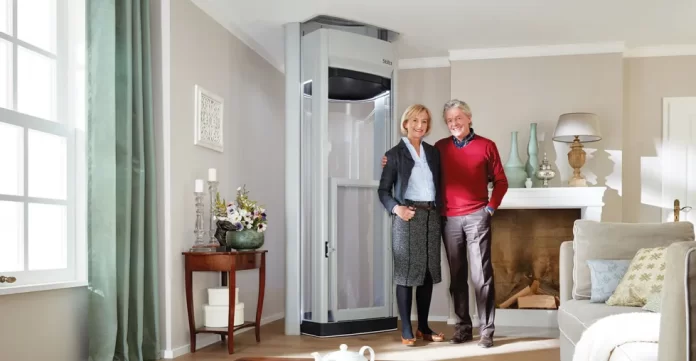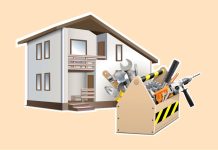When thinking of an elevator, most of us think of commercial applications: hotels, business parks, hospitals, and apartment buildings. These are the most common places that we encounter elevators, but they can also be an incredibly useful addition to a private home, especially for those with mobility issues or disabilities.
A residential elevator is a vital tool for senior citizens to maintain their independence, and they can also add a touch of luxury to any home, especially one with more than two stories. It can also add tremendous value to a home’s selling price, which is essential when trying to get the best return on your investment.
The process for installing an elevator is sometimes shrouded in mystery for the average person, who may never see one under construction, but it’s a relatively straightforward process in most situations. Though the techniques differ depending on the style of elevator being installed, there are common factors amongst all elevator installations. Today, let’s take a look at the different steps involved in home elevator installation, whether that’s a pneumatic, cable-driven, or hydraulic style.
Table of Contents
Step one: selecting a style
Before any work can begin, the homeowner must choose what type of elevator they would like to install; there are several types to choose from, each with their own merits. For a larger home, a hydraulic elevator may be a good choice, as they have heavy lifting power but require a larger footprint.
In more modest homes, the buyer should choose from cable-driven or pneumatic elevators, which both have their own merits. Cable-driven elevators are a bit smaller than hydraulic ones, but they do have a cable and pulley system which must be placed inside the home. Pneumatic elevators are quite small and can even be placed in a cabinet or closet, which makes them perfect for individuals who don’t have a lot of space but still need the convenience of an elevator.
Step two: evaluation
All construction projects require a thorough evaluation of the space before any work can begin, and elevator installation is no different. The contractor will measure the space, check that the foundation is strong enough to withstand the machinery necessary, and determine what would be the best orientation of the different elevator components.
Step three: acquiring permits
In most places, any major renovations to a private home will require some permits from the city; the exact steps of this are different from jurisdiction to jurisdiction, so homeowners should do their due diligence and ensure that they’ve received all the necessary approvals before any work begins. The elevator contractor can assist with this, as they have experience in securing the appropriate permits, but ultimately, it’s the homeowner who should double-check that their local laws have been followed to the letter.
Step four: design and customization
Just like every home is different, every elevator installation will be different too. Once the style of elevator has been selected, the homeowner can now work with the contractor to pick out every element of the elevator, such as size, metal finishings, and color. They can also ensure that every safety feature they need will be included, like emergency lighting and automatic sensors on the doors.
Step five: installation
During this step, the contractor will begin actually constructing and installing the elevator. This will differ slightly depending on the style of elevator that will be placed: for example, a hydraulic elevator will need to include the hydraulic lifts, and a cable-driven elevator needs a cable and pulley system with the appropriate counterweights. A pneumatic elevator has to have a vacuum system installed in the tube which serves as its shaft. Regardless of style, the contractor will need to build a shaft, install the components, place the cab, and connect the elevator’s mechanics to the electrical system of the home.
Step six: testing, inspection, and final approval
After everything’s been placed, it’s time to test and inspect the construction. The contractor will test every component of the elevator, ensuring that every part has been installed properly and that there are no faults in the system. The elevator will be run through its full process multiple times, and it won’t be approved until everything is running flawlessly; after all, if the elevator has any problems, they need to be rectified immediately, before any passengers ever step in.
Once it’s running to both the homeowner and contractor’s satisfaction, the homeowner will approve the project, and then they can ask any questions they may have about how to properly run and maintain the elevator. The contractor should never leave without fully informing the proud elevator owner of any special precautions or warning signs that the machine isn’t working properly. They’ll also hand over any warranty papers and user guides now, which should be kept in a safe place in case there’s ever any problems with the elevator.
Final thoughts
An elevator makes an excellent addition to any home, large or small; different styles work best in certain locations, so you should consider what will work best for your own home and your own lifestyle. With the help of a great contractor, you’ll have your very own elevator up and running in no time, ready to add ease and luxury to your everyday life.








